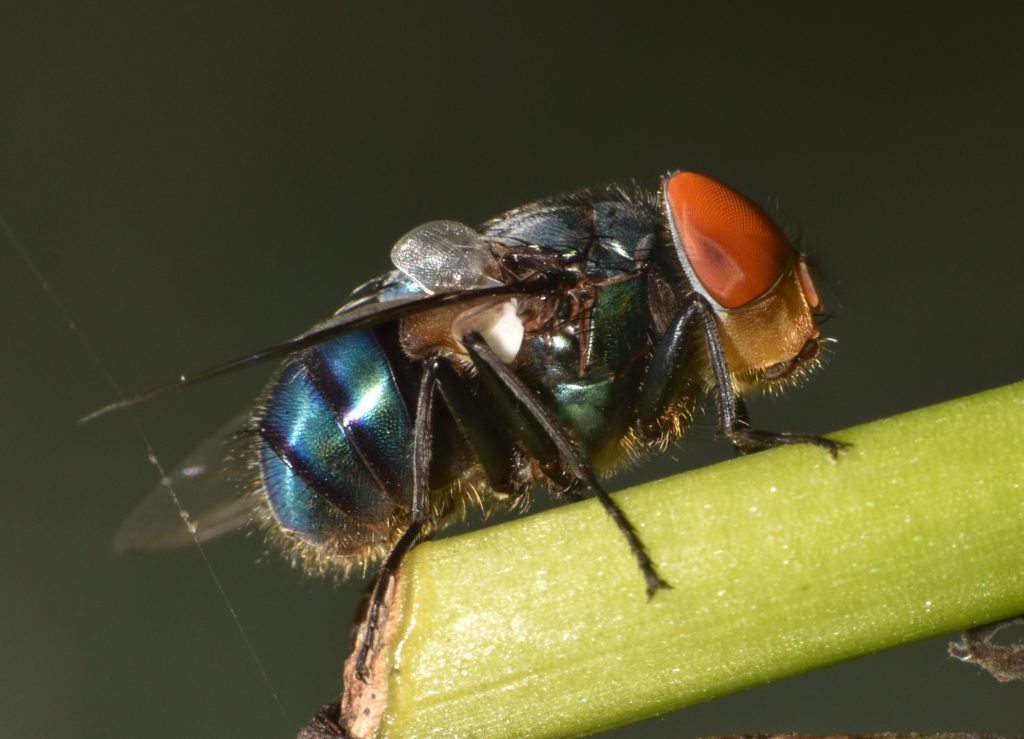
When a fly’s feeling hungry, it will land on its food and vomit out a mix of saliva and stomach acids. Image: Shiv's Fotografia
When a fly’s feeling hungry, it will land on its food and vomit out a mix of saliva and stomach acids. Image: Shiv’s Fotografia
Curious Kids is a series on The Conversation for children, where we ask experts to answer questions from kids.
Hi. Why do flies vomit on their food? – Lili, age 10, Adelaide.
Fantastic question, Lili.
It’s about that time of year where we start firing up the barbeques. Lucky for us, we have no problem eating our delicious sausage sandwiches because we have teeth (or even knives and forks if we’re feeling fancy) to help us break the food into smaller pieces, making it easier for us to swallow. But flies don’t have any teeth and rely on other ways to digest their food – like vomiting.
When a fly’s feeling hungry, it will land on its food and vomit out a mix of saliva and stomach acids. These liquids have digestive proteins that help to break down the food before it even enters the fly’s mouth, turning a solid meal into a soup. Like using a straw, the fly uses its long sucking mouthpart to slurp up its liquefied meal. Their mouthparts even have sponges at the end so they fly can suck up every last drop.
How dirty are flies
Because some species like the common bush fly and house fly are attracted to our food, they can sometimes make us sick. This is because there can be tiny disease-causing microbes that hitch a ride on fly’s feet and are left behind on our food when the fly touches it. That’s one reason why we don’t leave our food uncovered for too long. Scientists at the CSIRO’s Australian National Insect Collection are using DNA to identify which microbes are transmitted by the feet and vomit of bush flies. This will be able to answer the age old question of how dirty flies really are.
Garden-friendly flies
Bush flies and blowflies all vomit on their food, but other flies are a little more polite at the dinner table and don’t vomit at all. Did you know there are 30,000 known species of flies in Australia? Horse flies (sometimes called march flies) and flower flies have a sweet tooth and love to drink nectar! They use their mouthparts to reach inside a flower and suck up nectar, which is full of sugar and nutrients. As they move from flower to flower drinking nectar, the fly’s hairy beard gets covered in pollen. Did you know that flies help pollinate some of Australia’s favourite native plants like the tea tree, Eucalyptus and Grevillea? Some flies, like black and gold horse fly (Osca lata), drink so much nectar that their abdomens taste like honey!
Happy National Pollinators Week! Flies are amazing pollinators, including this hover fly who is working hard in the garden! ?Dustin Rhoades #PolliNation pic.twitter.com/1xmGGp9e4i
— Dr Bryan Lessard (@BrytheFlyGuy) November 17, 2017
Hard working flies
Flies have many important jobs in nature that we take for granted. The larvae of flies, affectionately called maggots, love to recycle nutrients by eating dead plants and animals, and converting them into nutrients that can be used by other plants and fungi. Without flies we would be waist-deep in waste! Mosquito larvae are an important diet for fish, frogs and birds. If we wished away mosquitoes, many of these larger animals would go hungry because they won’t be able to eat their favourite wriggling food.
So as you enjoy your sausage sanga this summer, appreciate how we digest food and spare a thought (and serviette) for the poor, toothless fly.

